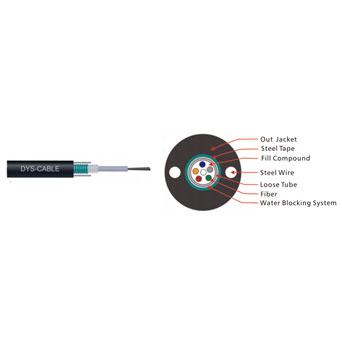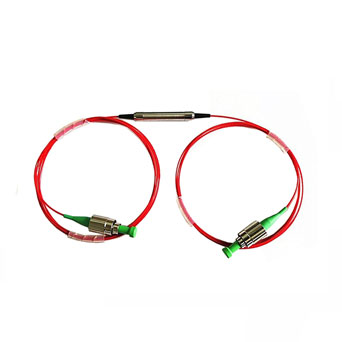Fused Biconical Taper (FBT) splitters are a fundamental component in fiber optic communication, playing a vital role in distributing optical signals in various network applications. This section delves into the essentials of FBT splitters, their construction, and their unique features.
What is an FBT Splitter?
An FBT splitter, or fused biconical taper splitter, is a traditional type of optical splitter used in fiber optics. It operates by fusing and tapering two or more fibers together, enabling the splitting of light signals into multiple paths.
Construction and Working Principle
Fusion Process: In FBT splitters, optical fibers are closely aligned, heated, and elongated. This fusion creates a biconical shape, allowing light to be split or combined based on the desired coupling ratio.
Protection: The fused fibers are safeguarded by a glass substrate and a stainless steel tube, ensuring durability and stability in various environments.
Signal Control: The coupling ratio, which dictates the division of optical power among output ports, is adjustable during the manufacturing process.
Advantages and Limitations
Advantages:
Cost-Effectiveness: The fbt splitter is generally more affordable compared to other splitter types, making it a popular choice for budget-conscious applications.
Customizable Ratios: They offer flexibility in splitting ratios, catering to specific network requirements.
Broad Wavelength Range: FBT splitters work well with multiple wavelengths, including 850nm, 1310nm, and 1550nm.
Limitations:
Restricted Wavelength Operation: Despite their broad range, they are limited to specific operating wavelengths.
Higher Insertion Loss: FBT splitters may exhibit higher insertion loss, especially in configurations with more than eight splits.
Temperature Sensitivity: They are more susceptible to performance variations due to temperature changes, known as Temperature-Dependent Loss (TDL).
PLC Splitters: An Advanced Alternative
Planar Lightwave Circuit (PLC) splitters, offered by various plc splitter suppliers, represent a more advanced option in the realm of fiber optic communication. They offer enhanced performance and reliability, making them a preferred choice for modern optical networks. This section explores the core aspects of PLC splitters.
What is a PLC Splitter?
A PLC splitter, or planar lightwave circuit splitter, is a type of optical splitter that employs waveguide optics to distribute optical signals evenly. It is known for its high precision and stability in fiber optics.
Construction and Working Principle
Waveguide Technology: PLC splitters use a silica glass chip with multiple waveguides, etched using lithographic techniques.
Signal Distribution: Light is split into multiple outputs uniformly, using an optical chip that integrates semiconductor technology.
Uniform Splitting: These splitters are capable of distributing signals equally across all output ports, ensuring consistent signal strength.
Advantages and Superior Performance
Advantages:
Wide Wavelength Range: PLC splitters support a broad operating wavelength from 1260nm to 1650nm, suitable for various applications in optical networking.
High Reliability and Low Failure Rate: Known for their robust construction, PLC splitters exhibit a low failure rate, making them ideal for critical network infrastructures.
Low Insertion Loss: They maintain a low level of signal loss, enhancing overall network efficiency.
Temperature Stability: PLC splitters operate effectively over a wide temperature range, exhibiting minimal Temperature-Dependent Loss (TDL).
Comparative Analysis: FBT vs. PLC Splitters
When it comes to fiber optic communication, choosing the right type of optical splitter is crucial. This section provides a comprehensive comparative analysis of FBT (Fused Biconical Taper) splitters and PLC (Planar Lightwave Circuit) splitters, highlighting their differences and suitability for various applications in optical networking.
Operating Wavelength Range
FBT Splitters: Limited to specific wavelengths, typically 850nm, 1310nm, and 1550nm.
PLC Splitters: Offer a wider range, supporting wavelengths from 1260nm to 1650nm, making them more versatile for diverse applications.
Splitting Ratios and Flexibility
FBT Splitters: Provide customizable splitting ratios, but with a maximum split ratio of up to 1:32.
PLC Splitters: Have standard splitting ratios up to 1:64, offering higher scalability but less flexibility in customization.
Signal Quality and Reliability
FBT Splitters: Can experience uneven signal splitting and are more prone to insertion loss and failure rate, especially in configurations with more than eight splits.
PLC Splitters: Known for uniform signal distribution across all outputs, leading to lower insertion loss and a significantly lower failure rate.
Temperature-Dependent Loss and Environmental Stability
FBT Splitters: More sensitive to temperature changes, which can affect performance and reliability.
PLC Splitters: Exhibit greater stability over a broader temperature range, typically from -40 to +85 °C, making them more suitable for extreme environments.
Physical Dimensions and Scalability
FBT Splitters: Generally larger in size, especially for higher split ratios.
PLC Splitters: Compact and require less space, beneficial in dense network environments like data centers.
Comparison of FBT vs. PLC Splitters
| Feature | FBT Splitters | PLC Splitters |
|---|
| Operating Wavelength | Limited (850nm, 1310nm, 1550nm) | Wide (1260nm-1650nm) |
| Splitting Ratios | Customizable, up to 1:32 | Standard, up to 1:64 |
| Signal Quality | Variable, higher insertion loss | Uniform, lower insertion loss |
| Temperature Stability | Sensitive | High stability |
| Physical Size | Larger for higher ratios | Compact |
Applications in Optical Networks
FBT and PLC splitters play pivotal roles in various optical network applications. Their unique characteristics make them suitable for different environments in fiber optic communication. This section explores how these splitters are utilized in diverse network settings.
FBT Splitters in Various Network Environments
FBT splitters are commonly used in:
Passive Optical Networks (PONs): Ideal for FTTH (Fiber-to-the-Home) networks, where cost-effectiveness is crucial.
Fiber Optic Sensors: Used in environments where custom split ratios are required for specific sensing applications.
Fiber Optic Amplifiers: Suitable for networks that don't demand high split counts but require the flexibility of customized splitting ratios.
FBT splitters are preferred in applications where the budget is a primary concern and where the operational wavelength and environmental conditions are within their optimal performance range.
PLC Splitters in High-Performance Networks
PLC splitters, on the other hand, are widely utilized in:
High-Speed Data Transmission: Essential in data centers where consistent signal quality and high reliability are required.
Long-Haul Optical Networks: Beneficial in applications that require stability over a broad range of temperatures and wavelengths.
Advanced PONs: Used in GPON, EPON systems for their ability to handle higher split ratios efficiently.
These splitters are ideal for demanding applications that require high performance, uniform signal distribution, and scalability.
Selecting the Right Splitter for Specific Applications
When choosing between FBT and PLC splitters, network designers should consider:
Network Requirements: Assess the specific needs of the network, including split ratios, operating wavelengths, and environmental conditions.
Cost vs. Performance: Balance the budget constraints with the desired performance level.
Future Scalability: Consider future network expansions and the scalability offered by the splitter type.
In summary, the application of FBT and PLC splitters in optical networks varies based on the specific requirements and challenges of each network environment. While FBT splitters offer a cost-effective solution for less demanding applications, PLC splitters are the go-to choice for high-performance and scalable networks.

 EN
EN



